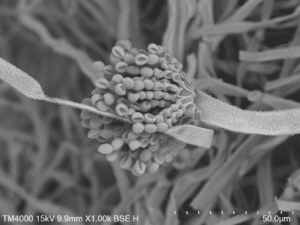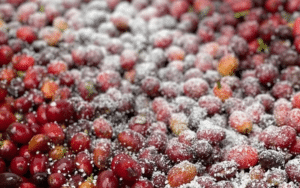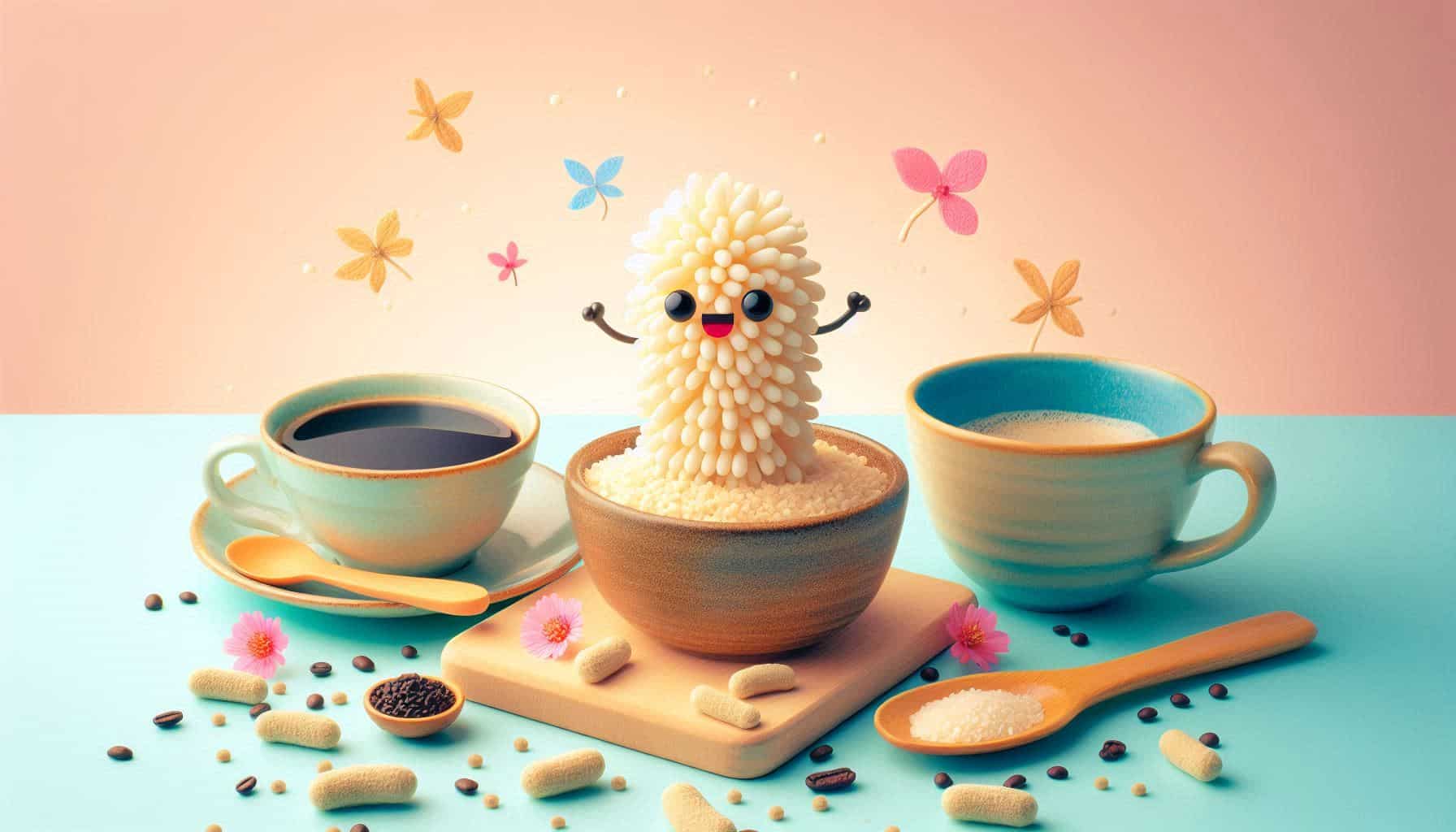What’s all the fuss about Koji?
Fermentation as a post-harvest process has enjoyed immense popularity for quite a bit now and the popularity refuses to die down. Producers have been experimenting with new fermentation processes hoping to improve the cup profile of their coffees and offer the end-consumers a variety of experiences in every cup of coffee. When done right, fermentations can improve SCA cup scores by as much as 8 points, which in the specialty world is enormous.
A few years back, one such unique fermentation caught many producers’ fancy – the koji-fermented processing. The 2021 Finnish Barista Champion – Kaapo Paavolainen presented the koji-fermented coffee to the judges, highlighting the beans’ additional sweetness, courtesy of the koji fermentation.
Invented by bioscientist Koichi Higuchi, the process involves using koji spores – an ancient mold used to make traditional Japanese fermented foods – to green coffee beans and leaving them to ferment. Koji adds a whole new dimension of flavor to the coffee. But what is koji and what’s all the fuss about fermenting coffee beans with it?
What is Koji?

Koji is a type of mold (fungi) used in the production of many foods, such as miso, soy sauce, sake, Jiang, douche, amazake, makgeolli, meju, tapai, and the list goes on. Koji has been used for millennia throughout Asia. In the past about 150 years or so, Koji has found applications in the rest of the world that the people who first domesticated it would have never imagined. Like, for fermenting coffee, for instance.
Koji mold has a scientific name – Aspergillus oryzae. But koji has been a common and popular name. Koji is an extremely powerful organic technology that has not only shaped the foods of various people but also ingrained & transformed their very cultures. So much so that the Japanese have declared koji to be their national mold. There are even manga comic books in Japan that feature Koji as a cartoon character!
What makes it more interesting is that Koji is a product of evolution. It was domesticated from its highly toxic cousin – Aspergillus flavus. The two species share 99.5% of their genome! And yet, one is dangerously poisonous, while the other helps produce the soulful miso, soy sauce, and a delightful sake that can be a dreamy Japanese dinner any day.
The earliest evidence of Koji dates back to the early Neolithic village of Jiahu in Henan province in China from the seventh millennium BCE. That is how old this wonder-mold is!
What does Koji do to coffee?
Simple answer – enhance the cup profile.
But it is never that simple, is it?
The koji fermentation protocol that is now most commonly used by producers around the world was developed by the renowned coffee researcher and consultant – Christopher Feran. He worked with Elias Bayter, currently in charge of the processing for the El Vergel farm in Tolima, Colombia.
The most commonly used microbe to ferment coffee post-harvest – yeast, feasts on the sugars, converting it into a range of different flavor compounds and of course, alcohol. You calculate the amount of yeast you need for the amount of cherries you are fermenting, seal the container, and let the yeasts do their magic. In contrast, Koji functions quite differently.
When used on a steamed base ingredient like soybeans or rice say to make shoyu or sake, Koji spores would eat up the starches in the beans and convert them into sugars. In the process, they would produce a host of fatty acids and amino acids that would contribute to the typical flavor of the respective foods.
However, things switch up a little more when fermenting coffee cherries. Koji spores draw out the sweetness from the cherries and the beans, by making the most of the naturally present sugars and starches that are naturally present in each bean. You can’t just add the koji ‘powder’ to the coffee cherries in a barrel and be done. Koji fermentation of coffee begins with koji spores and rice, coffee would come at a much later stage.
The koji spores are generally available as a dry powder that is mixed with starchy steamed rice and allowed to grow in a moist, warm environment. This will let the koji fungi draw nutrition from the rice and grow. Once the spores have grown considerably and are ready to harvest, the “koji cakes” are ground to a powder. This powder will be used to ferment the coffee cherries.
For the next step, the ripe red coffee cherries are put into tanks or bags, with the total height of the cherries not more than 5 cm. The cherries have to be uniformly spread across the entire length or surface. This height is specified since the koji will need air to grow and this height is optimum to let the whole mass get enough air. The harvest koji powder is now sprinkled on the cherries. It could take a minimum of 24 to 72 hours for the koji to have a noticeable effect on coffee. The farmer can decide how long they want the fermentation to progress.
Once the fermentation is complete, the coffee and fungi mass is dried, preferably in silos, where the temperature is preferably below 34C. The lack of moisture & air and low temperature ensure that the coffee cherries do not decompose.
The Cherry on Top – Yeasts

Yeasts are everywhere – on our skin, in the air around us, on every surface around us – everywhere! Despite a farmer’s best efforts, yeasts will be there in the koji fermentation tanks/bags too. This could work to a farmer’s advantage. Koji spores break down complex sugars into simpler sugars and a range of flavor molecules. The yeasts then step in and break down the simple sugars the koji produced into more flavor molecules, some acids, and also some carbon dioxide.
If that is too complex to understand, here is an analogy. You brew coffee, say using an AeroPress, and produce a coffee puck as a result. Your friend uses the coffee puck you produced to make coffee sacccharum and makes delicious espresso martinis with it. Only, in this context, you are the koji and your friend is the yeast, the coffee beans you used are the complex sugars in coffee cherries, the coffee puck your friend used are the simple sugars. Quite fun, isn’t it?
The Result
Koji fermentation yields a coffee that will generally have a better body, more sweetness, and a longer aftertaste. Koji brings out a level of sweetness a farmer could probably never unlock with traditional yeast or anoxic fermentations.
The Future of Koji in Coffee
Koji fermentation as a post-harvest process for coffee holds a lot of potential. Working with koji, especially in the initial steps of the protocol, does require careful monitoring and quite some care. But, koji generally doesn’t need any specialized equipment to carry out the fermentation of coffee cherries, so that is helpful.
However, one challenge most coffee producers face is accessibility to good-quality koji spores. Koji spores are not easily available around the world and usually need to be imported, which can be a significant cost burden for producers. Growing the spores also requires starchy rice with certain characteristics to get the rice cakes that will be used for the fermentation, which could be another challenge to find and add to the costs.
It is still quite soon to say if koji-fermented coffees could one day rule the world or be a staple on café menus. Right now, they make for good novelty lots and limited offerings. We have barely scratched the surface of exploring koji’s potential in coffee and there is a long way ahead.

